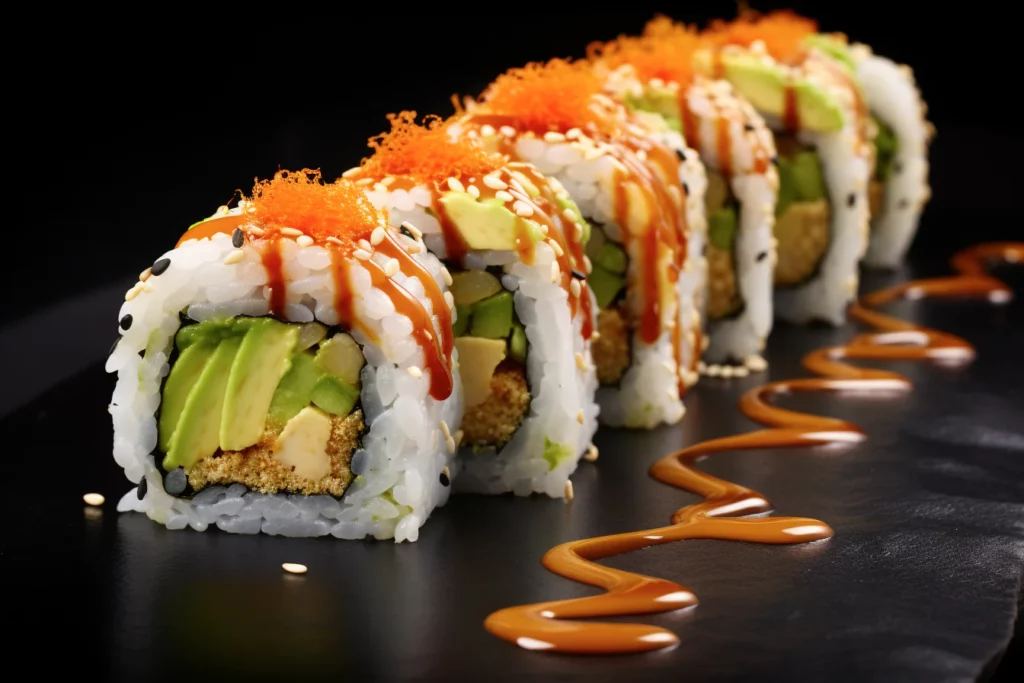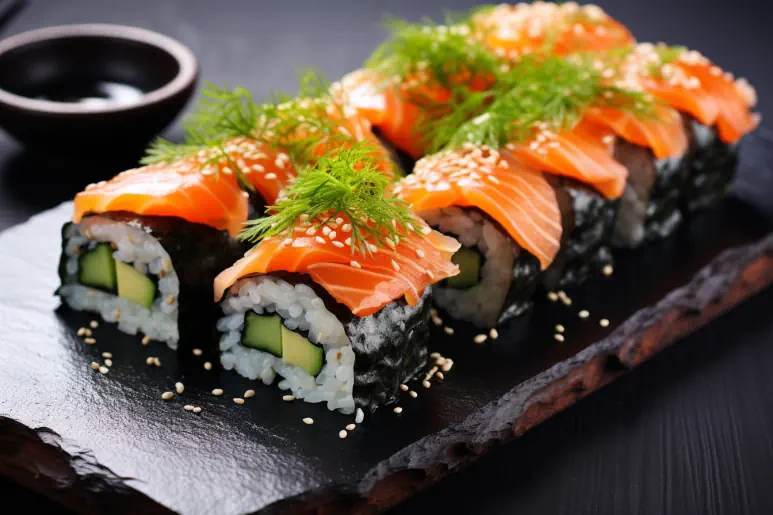In the rich tapestry of global gastronomy, there is little as universally alluring and at the same time surprising as the story of the California Roll. Lost between the traditional paths of sushi and the bold novelty of American ingredients, its origins lie in the troubled 1960s in the United States. From there, it has found its way into the hearts and kitchens of enthusiasts around the world. But just as exciting as its history is the continuous reinterpretation of this culinary icon. With a willingness to bend traditions, not to break them, the California Roll asserts itself as the perfect showcase for culinary innovation.
History of the California Roll
As an entry ticket to the fascinating world of sushi, the California Roll has a permanent place. It is a Western interpretation of the Japanese art of sushi that was born in the United States and quickly spread worldwide. At its core is a story about cultures, innovation, and change that provides a deep dive into American food culture.
The California Roll is no ordinary sushi. In traditional Japanese cuisine, fish and seafood play the main role. Nevertheless, the main ingredient of the California Roll is an avocado, a fruit that is almost unknown in Japan. It is combined with surimi crab meat and cucumber and packed with rice and nori, upside down so that the rice is on the outside – another innovation that initially caused confused looks in Japan.
The origin of the California Roll is a masterpiece of fusion and customization, blending the components of Japanese sushi art with Californian ingredients – all fresh, local, and seasonal, just the way Americans love it.
The California roll has its roots in the 1960s, when California sushi chef Ichiro Mashita came up with the idea of replacing the lack of traditional tuna with avocado. The buttery consistency of the avocado paired perfectly with the rest of the roll and became an instant hit on California’s local sushi scene.
But the California Roll doesn’t just show the multiculturalism of American cuisine. It also exemplifies America’s ability to find creative solutions to challenges. When tuna wasn’t available, an innovative chef experimented with local ingredients to create an even more irresistible creation. These principles—innovation, adaptability, and cultural fusion—are cornerstones of American food culture.
Meanwhile, the California Roll has become a global favorite, which has also paved the way for the emergence of more fantasy sushi in America. From the Philadelphia Roll to the Dragon Roll, America offers a variety of creative sushi creations that defy the usual sushi experience and reflect the country’s food culture.
The California Roll embodies American food culture in so many ways – blending cultural influences, emphasizing fresh, local ingredients, and showing the courage to break traditions and create something new. It is not only a culinary composition, but a reflection of the American melting pot.
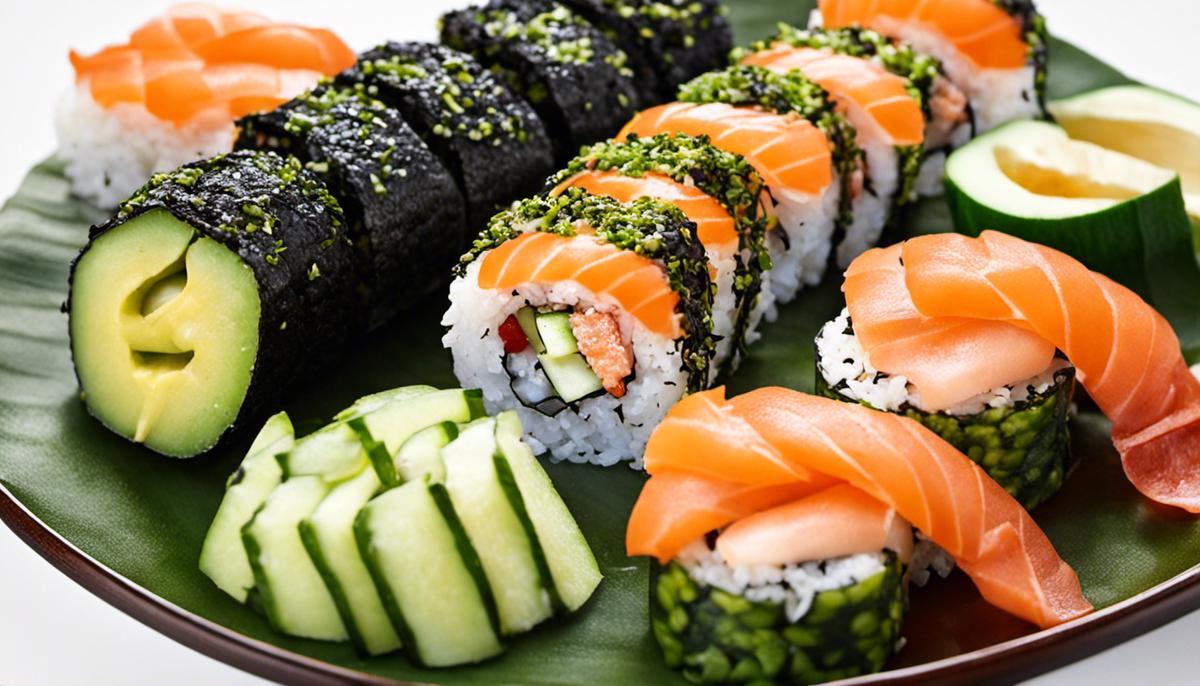
Reinterpretation of the Classic California Roll
The core of the California Roll consists of avocado, surimi and cucumber – classic ingredients, but they can be varied in a wide variety of ways. For example, the surimi can be replaced with fresh fish such as tuna or salmon to suit the tastes of sushi lovers looking for a stronger connection to traditional sushi. The addition of exotic fruits can also create new, unusual flavor combinations and give the California Roll a modern, creative touch.
Another way to give the California Roll a modern face is to use alternative ingredients that are in line with the latest food trends. Instead of conventional sushi rice, for example, the health-promoting quinoa could be used. Beetroot or sweet potatoes would also be exciting options and could provide a colorful sight at the same time.
Equally exciting is the use of modern techniques and tools for preparation. The sous-vide method, in which fish or seafood is cooked slowly and gently under vacuum, could give the California roll a whole new flavor profile while refining the consistency of the fish.
Last but not least, there are also completely new interpretations of the California Roll that defy the limits of sushi art. Imagine, for example, an alluring California Roll peppered with mango and chili peels and steamed in coconut milk – a compelling blend of Californian vibe and tropical flair that will beguile your senses.
The creation of new variations and interpretations of the California Roll is therefore more than just a necessity to meet modern tastes and follow current food trends. It is also an expression of the cultural diversity and creative energy that characterizes and enriches the culinary world of America and the world at large. Because in the end, it is this diversity and creativity that not only fills and inspires our table, but also our hearts and our tastes again and again.
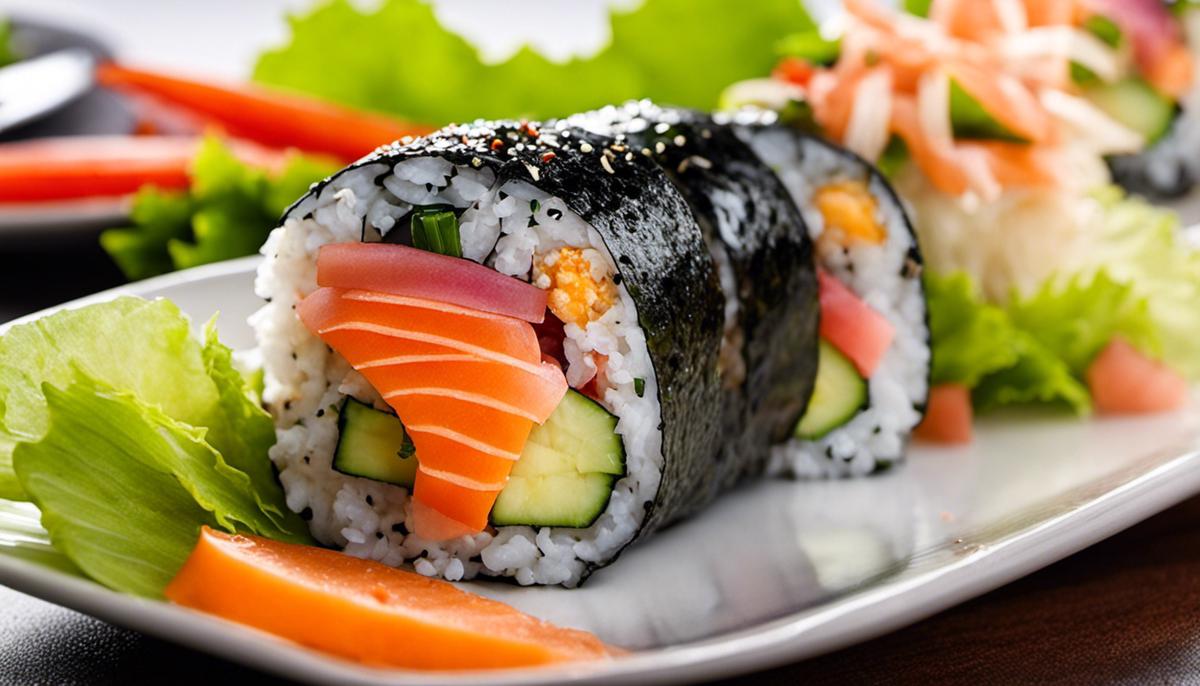
Preparation of California Roll Deluxe
It’s undeniable that the main ingredients of a California Roll Deluxe already create intriguing flavors and textures on their own. Surimi with its delicate, strong, fresh taste, high-quality avocado, which rounds off the ensemble with its creamy consistency and subtle nutty note, fragrant sushi rice and crunchy sea vegetables. But the Deluxe principle invites you to go even further and set unusual accents, for example with exotic fruits or fresh fish instead of surimi.
The wide range of fresh seafood offers, for example, tuna or salmon as alternatives to the classic surimi. Variations with prawns or crab meat would also be conceivable, which change the aromatic profile of the California Roll, but still retain its essence.
Exotic fruits can also be a delightful diversion. How about a hint of mango or papaya, which provide a sweet contrast to the salty sea taste? Or for an even bolder variation, you could add chili to intensify the aroma and create a pleasant warmth.
Modern techniques such as sous-vide cooking can also improve the flavor and texture of the roll. This process allows the ingredients to be cooked at low temperatures for a long time. In this way, the aromas are preserved and the textures are changed gently rather than aggressively.
In addition, alternative ingredients such as quinoa, beetroot or sweet potatoes can be used to give the California Roll a modern twist. This is not only a question of visual attractiveness, but also opens up completely new horizons of taste experience.
So feel free to mute a little with the California Roll Deluxe at home. The key to reinvention lies in the willingness to explore and experiment with different flavors to create unique and satisfying combinations. The California Roll Deluxe is a tribute to the changing tastes and food trends, cultural diversity and culinary creativity that make up the dining experience of our time. It is the perfect reel for those who want to let off steam in the kitchen and discover the endless possibilities of the culinary world.
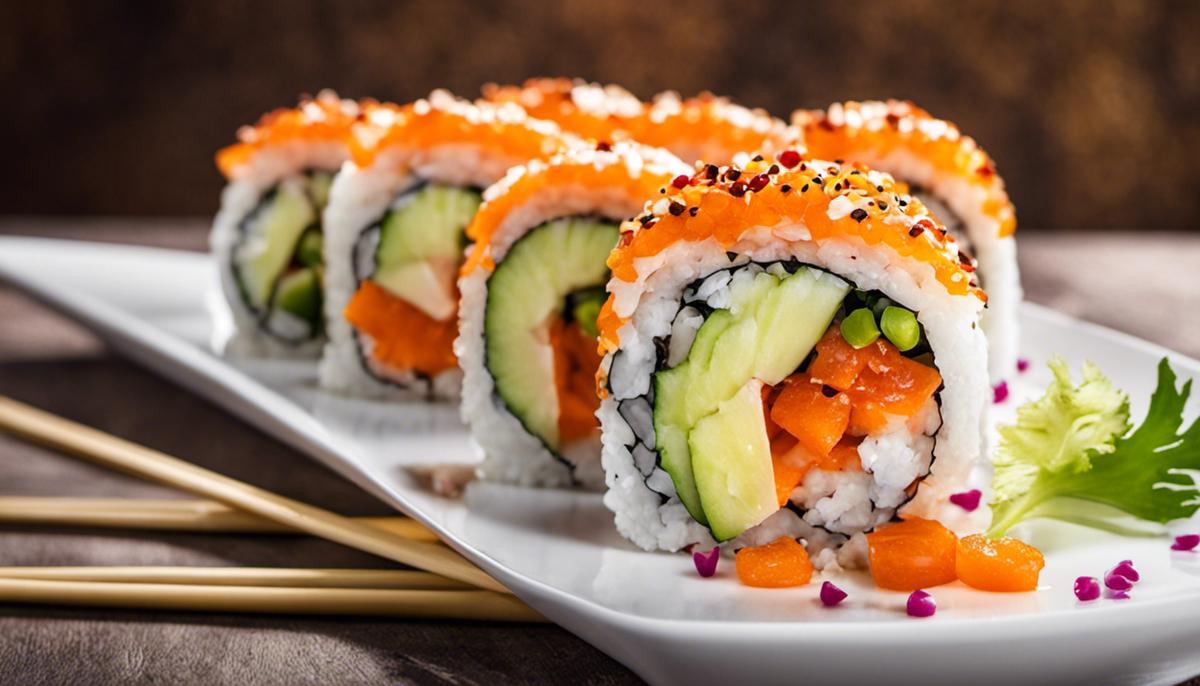
Not only is the story of the California Roll a testament to the uniqueness of America’s culinary contribution, its constant reinterpretation also demonstrates the creativity and adaptability of gastronomy in an ever-changing world. With the right combination of knowledge, skill and creativity, any kitchen is ready to prepare the next exquisite California Roll Deluxe. By understanding their past and embracing new possibilities, the promise of this culinary classic remains as exciting as ever. And who knows—maybe your kitchen table will set the stage for the next big innovation in the California Roll’s fascinating evolution.
